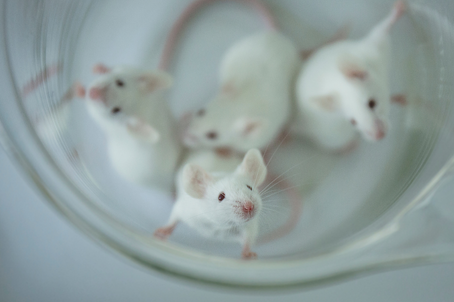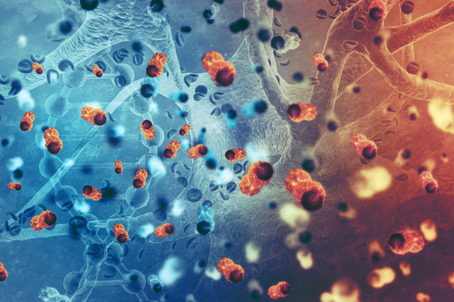-
-

-
July 16, 2025
Advancing Alzheimer's Research at AAIC 2025: Discover GemPharmatech's Cutting-Edge AD Mouse Models
The Alzheimer's Association International Conference (AAIC 2025) is the premier global forum for groundbreaking research in Alzheimer's disease (AD) and dementia. As a leader in preclinical models, GemPharmatech is proud to showcase our advanced AD mouse models at this year's conference. Join us to explore how our innovative tools can accelerate your research and drive the next wave of therapeutic breakthroughs.
-
-
-

-
July 07, 2025
TCE In Vitro Evaluation Platform: Comprehensive Assessment from Target Engagement to Tumor Cell Killing
Bispecific T-cell engagers (TCEs) are engineered antibodies that simultaneously bind tumor-associated antigens (TAAs) on tumor cells and the CD3 receptor on T-cells to direct potent cytotoxic responses against cancer cells. At GemPharmatech, we have established a comprehensive in vitro platform to support development of TCE-based therapies from evaluating binding efficiency to functional activation, and immune cell mediated killing across multiple assay formats.
-
-
-

-
June 26, 2025
Weight Loss of 10% Within 2 Weeks? Evaluating Amylin Analogs in Diet-Induced Obese (DIO) Rat Model
Cagrilintide, a long-acting amylin analog, demonstrates transformative potential in obesity treatment. Studies reveal species-specific effects: amylin analogs induce sustained weight loss in rats but exhibit weaker anorectic effects in mice. Leveraging this divergence, GemPharmatech employed a diet-induced obese (DIO) rat model (12-week high-fat diet [HFD] induction) to test a 4-week intervention. Read the full blog to learn more.
-
-
-

-
June 25, 2025
World Vitiligo Day: Advancing Awareness and Therapeutic Innovation
Vitiligo is an acquired depigmenting skin disorder affecting 0.5%-2% of the global population. Current treatments include glucocorticoids and calcineurin inhibitors (e.g., tacrolimus ointment, pimecrolimus cream). However, efficacy is often partial and relapse rates remain high. At GemPharmatech, we provide two distinct immunodeficient mouse models of vitiligo to support early-stage drug efficacy and translational research. These models enable in vivo testing of candidate therapies, from small molecules to biologics, under controlled immunological contexts.
-
-
-

-
April 10, 2025
World Parkinson’s Day 2025: Advancing Parkinson’s Research with Cutting-Edge Mouse Models
April 11th marks World Parkinson’s Day, honoring James Parkinson, the pioneering physician who first systematically described the disease carrying his namesake. Parkinson’s disease (PD) is a progressive neurodegenerative disorder affecting millions worldwide, primarily impairing motor functions and often accompanied by cognitive decline. As the second most common neurodegenerative disease globally, its prevalence is projected to double by 2050, reaching more than 25 million patients. This growth underscores the urgent need for breakthroughs in understanding and treating PD.
-
-
-

-
February 28, 2025
Mouse Models Bring Hope for Rare Disease Research
-
-
-

-
February 10, 2025
Featured on the Cover of Cell Metabolism! Publication on Cancer Cachexia Supported by GemPharmatech’s Mouse Models
Cancer cachexia, also known as “wasting syndrome,” is a common and serious complication in cancer patients. It is characterized by weight loss, reduced appetite, skeletal muscle atrophy, and fat degradation, significantly affecting the quality of life and increasing the risk of death. Currently, there are no effective treatments, and traditional nutritional support only partially alleviates symptoms. Therefore, in-depth research into its pathogenesis is especially important. GemPharmatech’s mouse models were recently cited in a December publication titled, "Disrupted methionine cycle triggers muscle atrophy in cancer cachexia through epigenetic regulation of REDD1" featured in Cell Metabolism. Read below to learn about this disease and how our models were used in the research.
-



